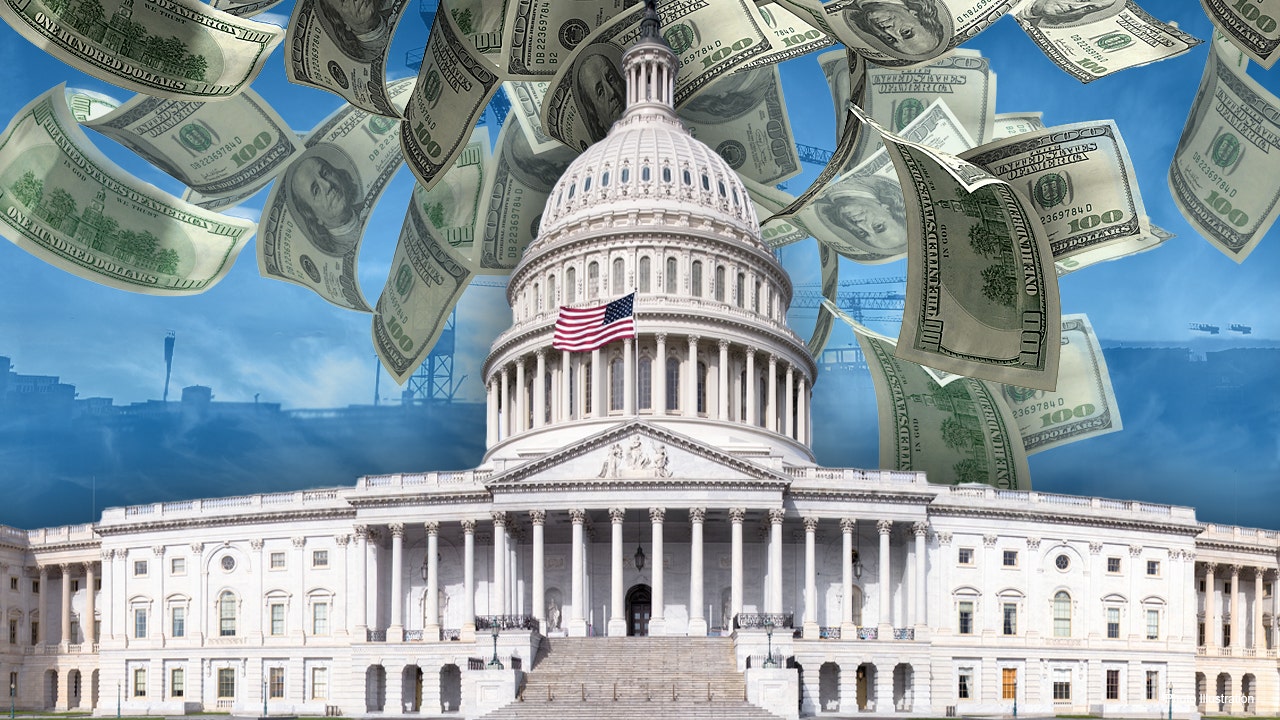Finance
Federal deficit blew up $89B more in 1st quarter 2024 than last year

The federal government ran a $510 billion budget deficit in the first quarter of fiscal year 2024 – an increase of $89 billion from the same period a year ago, according to data from the Treasury Department and the nonpartisan Congressional Budget Office (CBO).
The CBO noted that the deficit grew in Q1 of FY24 compared to the same period a year ago because federal spending rose at a faster pace than tax receipts in its preliminary analysis of the budget data.
While the government’s tax revenue rose by $83 billion in that period, spending increased by $170 billion, resulting in a $510 billion deficit that was $89 billion larger than last year’s $421 billion deficit in the first quarter, according to the Treasury’s data.
In its monthly budget review, the CBO found that net interest spending, or the cost of servicing the $34 trillion national debt, was the biggest contributor to the increase in spending. Interest expenditures rose by $73 billion in Q1 of 2024 compared to the same period a year ago, which can be attributed to the Federal Reserve raising interest rates to tamp down inflation.
US NATIONAL DEBT TRACKER: SEE WHAT AMERICAN TAXPAYERS (YOU) OWE IN REAL TIME
Another leading factor in the increase in spending was the Federal Deposit Insurance Corporation (FDIC), which saw its spending rise by $62 billion due to resolving the bank failures in 2023.
The agency expects to recover most of that amount as it continues liquidating bank assets and collecting premiums from FDIC-insured financial institutions in the next several years.
HOW MUCH DEBT IS TOO MUCH DEBT?

Mandatory spending programs also played a role in the larger overall spending picture – Social Security benefits paid increased by $37 billion, or 12%, compared to a year ago, while Medicare benefit spending rose by $18 billion, or 13%.
On the revenue side of the ledger, corporate income tax collections increased by $44 billion, a 42% increase from last year. Federal income and payroll tax collections rose by $42 billion, or 5%, compared to a year ago.
The widening budget gap comes after the federal government ran four of the five largest budget deficits in history in the last four fiscal years amid a surge of federal spending on the COVID-19 pandemic.
That trend pushed the national debt above $34 trillion for the first time in history earlier this year.
The Office of Management and Budget estimated in July that the U.S. will run a $1.877 trillion deficit for the full FY24, an increase of $182 billion from the $1.695 trillion deficit the U.S. government ran in FY23.
LARGE DEFICITS, HIGH INTEREST RATES MAKING FEDERAL DEBT LESS SUSTAINABLE
The U.S. ran its largest deficit in history in FY20 at the peak of the pandemic, with a more than $3.1 trillion shortfall. The second-largest deficit occurred a year later, hitting $2.7 trillion in FY21.
As some COVID-19 relief programs expired in FY22, the deficit dipped to $1.375 trillion, before rising again last year as new spending programs kicked into effect.

Before the COVID-19 pandemic, the largest U.S. deficit was $1.4 trillion incurred in FY09 as the country responded to the financial crisis and the recession that followed.
Read the full article here


















